#conservation genetics
Explore tagged Tumblr posts
Text
Call me a laboratory Drosophila melanogaster the way that any increased stress in my environment is going to decrease my survival rate
#science#zoology#conservation genetics#conservation#genetics#drosophila#diary blog#uni life#university student#stress#just joking#Biology#biology babyyyy#biology blog#biochemistry
39 notes
·
View notes
Text

In the 90's there were only 10 pink pigeons left. Thanks to breeding programs there were over 400 as of 2018. If they did it once, they can do it again. There is ALWAYS hope.
#conservation#conservation genetics#never give up hope#chester zoo#save the earth#pink pigeon#blue eyed ground dove
6 notes
·
View notes
Text
I’d like to add that one of the working theories about giant squids is — based on genetic data — that they are GLOBAL travelers. As in they move about the GLOBE and aren’t restricted to single areas/territories or their territories are so ginormous that they intermix so much. Genetically, giant squids don’t seem to have distinct populations separated by distance which suggests that they travel very far and willingly breed with any squids they encounter. We don’t think we have multiple species or subspecies of giant squid, they are in all oceans! I’m on mobile but the paper is by Winkelmann et al. 2013
I love animals that are, like, the opposite of cryptids: we know for a fact they exist and have a clear idea of what they look like because we have photographs and individual specimens, but we haven’t the faintest idea where they’re coming from - they just keep showing up out of nowhere, and the locations of their actual population centres are a complete mystery.
#animals#zoology#cryptozoology#cryptids#wildlife#giant squids#squids#cephalopods#invertebrates#science#biology#conservation genetics
79K notes
·
View notes
Text
"Once thought to be extinct, black-footed ferrets are the only ferret native to North America, and are making a comeback, thanks to the tireless efforts of conservationists.
Captive breeding, habitat restoration, and wildlife reintegration have all played a major role in bringing populations into the hundreds after near total extinction.
But one other key development has been genetic cloning.
In April [2024], the United States Fish and Wildlife Service announced the cloning of two black-footed ferrets from preserved tissue samples, the second and third ferret clones in history, following the birth of the first clone in December 2020.
Cloning is a tactic to preserve the health of species, as all living black-footed ferrets come from just seven wild-caught descendants. This means their genetic diversity is extremely limited and opens them up to greater risks of disease and genetic abnormalities.
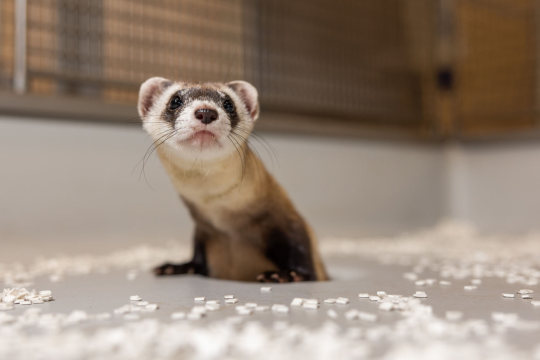
Now, a new breakthrough has been made.
Antonia, a black-footed ferret cloned from the DNA of a ferret that lived in the 1980s has successfully birthed two healthy kits of her own: Sibert and Red Cloud.
These babies mark the first successful live births from a cloned endangered species — and is a milestone for the country’s ferret recovery program.
The kits are now three months old, and mother Antonia is helping to raise them — and expand their gene pool.
In fact, Antonia’s offspring have three times the genetic diversity of any other living ferrets that have come from the original seven ancestors.

Researchers believe that expanded genetic diversity could help grow the ferrets’ population and help prime them to recover from ongoing diseases that have been massively detrimental to the species, including sylvatic plague and canine distemper.
“The successful breeding and subsequent birth of Antonia's kits marks a major milestone in endangered species conservation,” said Paul Marinari, senior curator at the Smithsonian’s National Zoo and Conservation Biology Institute.
“The many partners in the Black-footed Ferret Recovery Program continue their innovative and inspirational efforts to save this species and be a model for other conservation programs across the globe.”
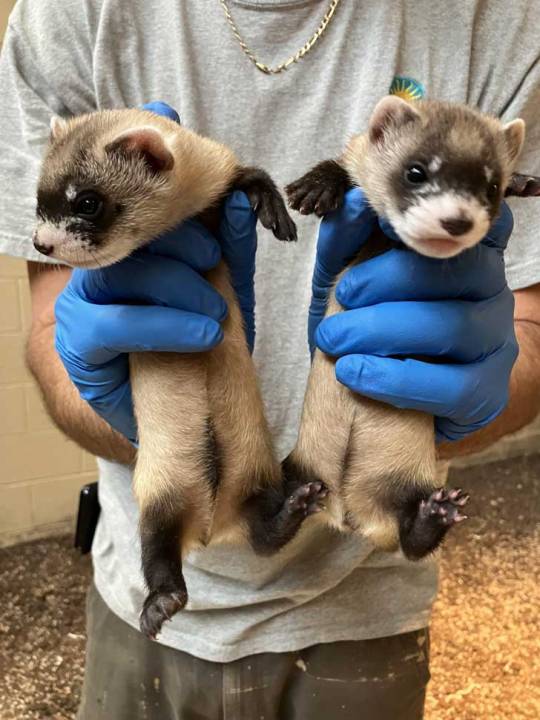
Antonia actually gave birth to three kits, after mating with Urchin, a 3-year-old male ferret. One of the three kits passed away shortly after birth, but one male and one female are in good health and meeting developmental milestones, according to the Smithsonian.
Mom and babies will remain at the facility for further research, with no plans to release them into the wild.
According to the Colorado Sun, another cloned ferret, Noreen, is also a potential mom in the cloning-breeding program. The original cloned ferret, Elizabeth Ann, is doing well at the recovery program in Colorado, but does not have the capabilities to breed.
Antonia, who was cloned using the DNA of a black-footed ferret named Willa, has now solidified Willa’s place as the eighth founding ancestor of all current living ferrets.
“By doing this, we’ve actually added an eighth founder,” said Tina Jackson, black-footed ferret recovery coordinator for the U.S. Fish and Wildlife Service, in an interview with the Colorado Sun.
“And in some ways that may not sound like a lot, but in this genetic world, that is huge.”

Along with the USFWS and Smithsonian, conservation organization Revive & Restore has also enabled the use of biotechnologies in conservation practice. Co-founder and executive director Ryan Phelan is thrilled to welcome these two new kits to the black-footed ferret family.
“For the first time, we can definitively say that cloning contributed meaningful genetic variation back into a breeding population,” he said in a statement.
“As these kits move forward in the breeding program, the impact of this work will multiply, building a more robust and resilient population over time.”"
-via GoodGoodGood, November 4, 2024
#ferret#ferrets#mustelid#black footed ferret#conservation#endangered species#conservation biology#biodiversity crisis#dna#genetics#cloning#good news#hope#hope posting#hopecore#hopepunk
10K notes
·
View notes
Text
Gene Tech is not your enemy
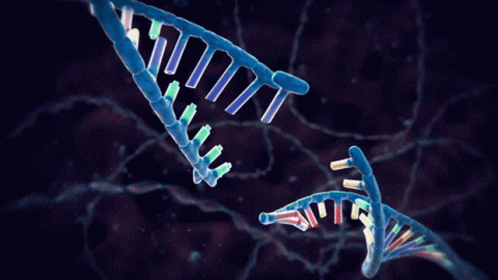
Let me throw one unpopular opinion at you: Gene Tech is actually not a bad. Genetically modified crops and what not are not bad and no, they will probably not give you cancer or anything of the like. In fact, if we want to save the planet and what not, we should totally embrace gene tech and gene editing.
With that I do not mean: "Edit human genes." Which is something that on one hand would be interesting and could have great promise, but on the other hand... would probably make the world so much world and lead to all sorts of eugenics.
No, I am talking first and foremost about editing the genes of some plants and maybe some insects.
See, I live in Germany, where a lot of GMO food is actually outlawed, which I find not good. Now, let me make one thing clear: Nobody should be able to copyright the genum of a crop. So fuck the hell off, Monsanto!
But gene editing can help us overcome many problems.
For once, we just have to face the facts: Climate is changing right now. It is changing and it creates bad harvests in many areas of the earth, because the crops are not adjusted for the new climate. In some areas it suddenly is too wet, in others it is too dry.
Humans have always edited the genes of plants and animals, of course. Just that we did it the very slow way by selective breeding them. Without selective breeding a wolf does not turn into a poodle.
Our ability to directly edit the genum of crops now allows us to quickly adust to the changing climate. Which might save a lot of people, if we allow it.
But apart from that, we can also do other things by gene editing.
We might be able to create plants, that are much better at storing CO2, than they would normally be. We are in fact able to create bacteria and algea, that eat micro plastics. We might in general be able to create bacteria able to dissolve garbage. We might be able to sustain plant species that otherwise might perish due to climate change.
And there might actually be some other things. See, we could maybe extinguish maleria thanks to gene tech. And we might be able to fight invasive species through it.
A lot of people in the conservation movement will be like "No, we should not mess with nature". But the thing is, that we already are messing with it.
Gene tech can help us to actually fix some of the problems we caused.
Again: Fucking Monsanto should not be allowed to copyright crops they created like this. But just because they are using it this way, does not mean, that the technology itself is horrible.
Opposing it just... does not get us anywhere.

854 notes
·
View notes
Text
A Theory About Sing's Animal Genetics
Throughout both Sing movies, we see a lot of different animals of all shapes and sizes. From Black Widow Spiders to African Elephants, the sheer range of species is remarkable. However, one thing stands out, the genetics of it all.
Part 1: The Apparent Genetics Behind Sing
Now, that might not make sense at first, but throughout both movies and all the shorts, we see no “extreme” hybridization. Like no random horse with scales or wings, or a spider with fins, etc etc. Every animal looks realistic. There are no extreme hybrids at all (trust me, I've scanned these movies scene by scene). And yet despite this, we see all kinds of interspecies relationships ranging from a cow and giraffe to an iguana and a crocodile or a snake and bull. Which to me means that genetics can work one of two ways: random species selection or hybridization.
Now, both of these are popular kinds of genetic species determination in anthropomorphic pieces of media. But I actually want to talk about random species selection first. Namely, how this is not what we see happening in Sing.
See, basically, how random species selection works is this. If the biological parents of an offspring are different species, the child will be one of the two species, but not a hybrid of them. An either-or situation. However, while I am willing to admit we do not see many children in the series, the few we see do not come from wildly different parents, in fact they all come from same species parents or parents who are from very visibly similar species, making this seem rather unlikely.
However, that isn't the only form of random species selection. Some variations of random species selection include certain species dominance, where some species will always be more likely to appear, a kind of dominant recessive type of deal. However, this is also not what we see happening in Sing. See the issue with this type of genetic species determination can lead to the over presence of certain species in the population. But we don't see that happening. We instead see what one would expect in terms of species prevalence based on their real-world animals.
So, if those two have not a lot of evidence going for them, that just leaves hybridization. And all of you are likely going "wait, but I thought you said earlier there were no visible hybrids in the series?" And you would be partially correct. There are no visual extreme hybrids. Regular ones that we can see in real life, however? Well, that's a different story.
See, there are animals we see that are likely hybrids. Heck, even a named character is all but confirmed to be one in my opinion. But how? What are the rules? Simple, like with species prevalence, Sing based its genetics off the real world.
What exactly do I mean by that? Well, Sing appears to follow real world hybridization rules in animals. Meaning two species must be extremely closely related in order for a hybrid offspring to occur. Think of some great cats, hoofed animals, and any animal with subspecies. Things like ligers, mules, and golden-crowned manakins are real world hybrids.
So, hybrids that exist in the real world are able to exist in Sing, what's my proof? I said there were characters who appear to be hybrids after all. Which ones? Well, there's four, namely: a background equine in the first movie, a background bear from the Sing Thriller Short, Johnny, and most noticeably, Porsha Crystal.
Let's go in order of least plausible evidence to most, starting with a character that shows up for less than twenty seconds in the first movie, an equine animal I have been dubbing Jack.

I will admit that this is a bit of a stretch primarily due to the lack of screen time. However, as we see both donkeys and horses in Sing 2, Jack here seems to be a mix between the two with the ears of a donkey and the longer mane of a horse and a white muzzle that we only see on horses. They also have what I have always heard be called a “classic mule colourations” aka what a mule looks like in most art I’ve ever been around. Here’s some photos to illustrate my point here.





So yeah, Jack looks a lot like what a mix of Sing horses and donkeys would look like, though they could just be one or the other as we do not really get another look at them.
Next is our lovely bear friend from Thriller, who I've been calling Terry in my notes.

See our friend Terry here does not look like the brown bears we have seen in the series in the slightest. But! They do not look exactly like the other species of bear we have seen in the series either (polar and panda).



But what do they look like then?

This is a grolar bear. Also known as a brown bear/polar bear hybrid. And the first thing that sprang to mind when I laid eyes on Terry here. With a similar build to both polar bears and brown bears that have appeared in the series before, combined with the similar coloration to a grolar bear, Terry seems like a genuine candidate for being a hybrid species. The only reason they are not higher on my list is the existence of Syrian brown bears, which could also fit them though I do not believe to be as likely just due to the bear species distribution we have seen.
Which is also why we come with more than one example for evidence! Our next candidate is.... the world's worst rebel, Johnny!

Now, Johnny being small is a topic I've touched on before. Because well... it's really noticeable when you put him even remotely near other gorillas. Which is further compounded by the fact that Johnny is called a mountain gorilla. You know, the second largest gorilla subspecies in the world?

So, there's a chance that Johnny is so small because he's not solely mountain gorilla, and instead is part or even half western lowland gorilla or cross river gorilla. Not only has he not had proper nutrition, but genetics are at play. This would also explain the more prominent brownish hue to his hair than the hair of his father and uncles.

However, like I mentioned and posted about previously, there is also a lot of evidence that Johnny likely has stunted growth due to malnutrition as a child, which often has permanent effects. So really, Johnny could be either of the two possibilities, or even potentially both a hybrid and stunted in growth.
And last but not least, the most obvious, all but confirmed hybrid (in my opinion), Porsha Crystal.
See, everywhere I check, I see Jimmy Crystal being described as an arctic wolf. And honestly? That checks out. He has a stockier build and solid white fur, as well as a smaller head. Very arctic wolf, down to the design of his fur.


But Porsha just isn't. She has a larger head, slender build, and most noticeably, coloured fur.



Arctic wolves have to have, despite being shades of brown/grey when they are born, solid white fur. It typically turns that way within about a year, with some patches occasionally sticking around a few years longer. But nowhere near as long as Porsha has seemingly been alive. And her colourations are pretty obviously part of her natural fur pattern, not tufts of baby hair sticking through.
"So what, she has a patterned coat? We’re seen character’s use hair dye before, that can't be the only reason-" Her build does not make sense for an arctic wolf. We see one due to her father. And the other children of the series that we are 100% sure are likely not hybrids look like their parents in terms of builds (think the piglets). Porsha does not. She looks more like the wolf bodyguard in that sense than her own father. She is much willowier with a notably different face shape that aligns with a different wolf subspecies than an arctic wolf, along with the coat pattern.

But which one?


Meet the northwestern wolf. A wolf that is a bit willowier than the arctic wolf, with a larger head shape, and most times, coloured fur. And a dead ringer for Porsha.
Which would make it seem like she is just a northwestern wolf right? Well, except one thing. Porsha is the same size as her dad, and arctic wolves are smaller than northwestern wolves. Which could be evidence of the arctic wolf dna. Same with the identical ear shapes. Those things are exactly why Porsha seemingly screams hybrid in terms of design, as well as the fact that she is simply called a wolf, with no subspecies designation. Because she's more than one.
Part Two: The Conservation Posters Theory
I promised a theory at the start and a theory you shall receive.
So throughout Sing 1 and 2, there are a ton of background posters. And only a few of those are fully legible. However, two (one in each movie) really stand out.

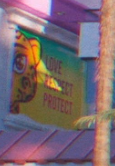
What can we see in these posters? Well, simple. A small build, light yellowish, feline with green eyes, round ears, compact head, and a rosette spot pattern. Besides this character, are the words "Love, Respect, Protect".
And that is super interesting. Because that cat? It's surprisingly hard to identify in terms of species. Now from the rosette pattern with the spots, we can immediately assume that this cat is a jaguar along with the proportionally large ears.
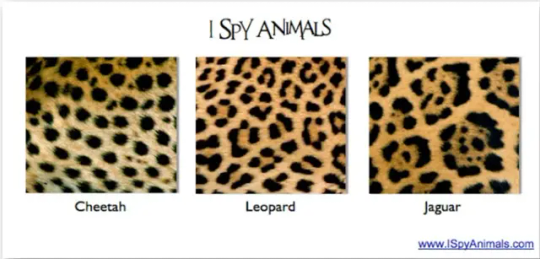
What makes that assumption weird though, is the head.
Jaguars have broader heads than what we see on the poster. And notably broader heads than leopards. However, the poster cat has a narrow head. Which reads like a leopard in all but shape, with the head being slightly more round than a leopard's is, but still far too narrow to be considered a jaguar's. It looks like a mix of the two.

The leopard similarities don't just end there either, as we look at the eyes. See, jaguars don't have green eyes, but you know who do? Leopards. Notably so even, with yellow-ish green being the primary colour seen in leopard eyes. (Yes, I understand Sing does not care about eye colour genetics. It also doesn’t care about physics or proper medical treatment. I’m ignoring all those factors rn lol.)
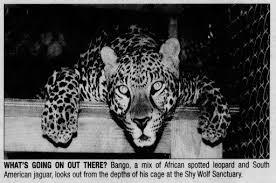

All of this leads me to one conclusion: that cat is either a jagulep or a lepjag/leguar aka, a hybrid of a jaguar and leopard of some kind.
This animal being a hybrid makes this poster make a ton more sense than a just standard predator species. Because we don’t see any discrimination between herbivores, carnivores, and omnivores. Seriously, within the cast we see, there isn’t any of the Zootopia type of discrimination at play. What we don’t see a lot of however, are likely hybrids.
If that poster is in fact about hybrids, it raises a new question about the lack of hybrids we see, which is, why don’t we?
A lot of animals can create hybrids. Any animal with a subspecies, a lot of canines, all the big cats, the list goes on. You would think that we would see way more than the four I mentioned above. And sure, we could count all the dog mixes (not really but we could try), and a lot of subspecies hybrids would look just like a regular one of that species to explain the low numbers, but the word choice of “protect” adds a weird taste to that story.
Because it implies that this is a reminder that needs to be said. A reminder to love and respect hybrids, fellow members of your community, needs to be told to the other community members. What’s more, it has to be added on that they need to be protected as well. Protected from what? By the looks of it, the community as a whole.
These posters are very similar to real world conservation and anti-bullying posters/billboards that are aimed at the general public in order to spread awareness. So, the fact that these posters are seemingly specifically about hybrids makes it clear that hybrids are likely not treated the best in the Sing universe. And while we don’t see this explicitly on screen, we can see potential effects it might have had, namely here: what an “acceptable” hybrid is.
See, the wording of the posters show that this group is discriminated against right? Well, we see Porsha and Johnny in particular not being treated differently from anyone else, so why? Well, let’s look at the hybrid on the poster.
Like I mentioned earlier, you have to look twice to realise that that cat is likely a hybrid. You have to know what you’re looking for. Same with Johnny. If he is a hybrid, it isn’t extremely noticeable besides his size, which again he can dismiss as just being small. Porsha is the only really noticeable hybrid of the three and the fact she is in the upper echelons of society should not be dismissed. She is not going to be treated the same as people not in that social class. So, her treatment in society as a whole is likely not going to be that different from a non-hybrid.
So, are they ideal hybrids? Well from what we can see in the movies and in the posters, it seems to be hybrids that are not noticeable are the least likely to face issues, hence the hybrid on the poster being legitimately the poster child for being a hybrid. In the Sing universe, hybrids are alright, but only when you don’t know they are there.
This would explain the small amount of them in the movies and shorts, not only are there not many possible ones, but the most noticeable ones would also likely be heavily discriminated against. So much so that groups are having to put up posters in order to hopefully raise awareness to stop this from happening. They are having to beg with these communities that the hybrids amongst them deserve love, respect, and safety just like everyone else. And we as viewers? Well, we don’t know if they are listening.
----------
Disclaimer: It is important to note that we do not see much of Porsha’s life or any of these character’s lives outside of a few snapshots from work. We do not see if Johnny had to deal with issues at school or if Porsha had to deal with issues online or with the media. We do not know. So they could have faced issues for potentially being hybrids that we just did not see on screen. Also, we do know species discrimination does exist, Buster and Mike in the first movie, as well as Jimmy in the second make several comments that are discriminatory. However, these do not seem to be widespread ideas in the Sing Universe, and it is nowhere near the level of predator/prey divides we see in other anthropomorphic media like Zootopia and Beastars. In fact, none of the remarks are even about a predator/prey divide at all.
#sing#sing 2#sing 2016#sing 2021#sing thriller#sing johnny#sing porsha#porsha crystal#sing movie analysis#aka gooseless overthinking things once again#this is longer than most of the essays i write lol#sing genetics theory + sing conservation posters theory
58 notes
·
View notes
Text
Dandelion News - October 22-28
Like these weekly compilations? Tip me at $kaybarr1735 or check out my Dandelion Doodles on Patreon!
1. Industrial wastelands to wildlife oases: Five nature wins that have actually worked
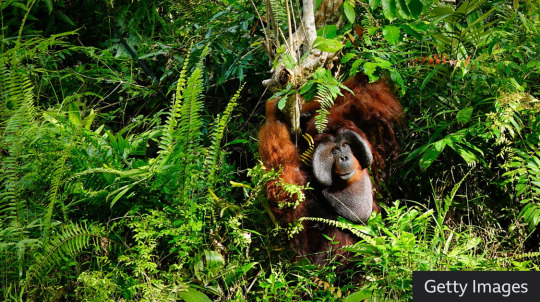
“[An archipelago in the Indian ocean] experienced a major whale comeback after signing up to a debt for nature swap[….] In Sri Lanka's capital of Colombo, local efforts have transformed what was once a rubbish dump to a wetland teeming with [wildlife….]”
2. Louisville launches America’s first 100% electric garbage truck fleet

““These innovative EV collection trucks will fulfill our trash, compost and recycling needs, reduce noise pollution, and include larger windshields to increase each driver’s field of vision and lower greenhouse gas emissions[….]” [The trucks are equipped with] audible devices that alert nearby drivers and pedestrians to compensate for their quieter operations.”
3. How a nearly extinct crocodile species returned from the brink in Cambodia

“By the late nineties, [Siamese crocodiles] were thought to be extinct. […] Today there are about 1,000 Siamese crocodiles in the wild[….] The first crocodiles were reintroduced into the wild in 2012 and they have begun breeding in the wild: over a hundred eggs were discovered in the forests in July, the most so far.”
4. Before his death, this conservative combat veteran filmed a PSA advocating for his transgender son
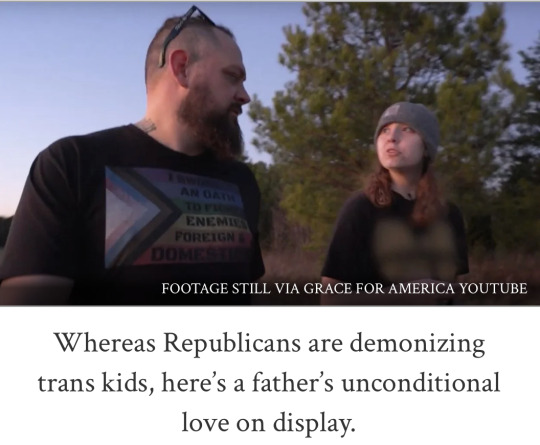
““Eric [“a conservative South Carolina U.S. Army combat veteran and father of a transgender child”] believed in the importance of freedom for trans kids — the right to live authentically and without fear,” [his widow] said. “He saw this not as a political issue but as a human one, recognizing that every child deserves the chance to thrive and feel whole.”” [Curator’s note: obviously, utmost condolences to Eric’s family; I’m including this as good news because it’s impactful to see a respectable member of the political party more often known for transmisia instead publicly advocating for his son’s human - not just political - rights]
5. Azores to create largest Marine Protected Area in North Atlantic – and a 'blueprint' for the rest of the world

““The Azores’ waters are a hotspot for marine life, hosting a third of the world's whale and dolphin species,[…” and harbouring] “cold-water corals and sponge fields that act as nurseries and feeding grounds for countless species, from deep-sea sharks to commercially valuable fish stocks.””
6. ‘It’s a big lever for change’: the radical contract protecting Hamburg’s green space

“Citizen power forced Germany’s greenest city-state into a binding agreement balancing housing and nature[….] The authorities signed an agreement with the citizen’s initiative to protect 30% of Hamburg’s land area – 10% as untouchable nature reserves and 20% with a looser conservation status – and ensure the share of public green space in the city rises over time.”
7. Behind the Scenes at the Federal Bee Lab Powered by Native Plants
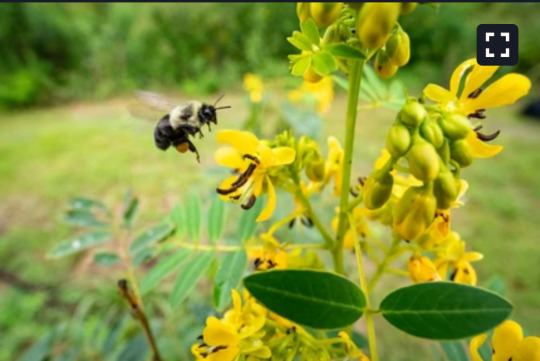
“Once native plants reappeared at the lab, he says, the impact was dramatic. In the first year, many of the region’s 200 native bee species arrived in droves. [… B]irds Droege had never before seen on the premises began to turn up to feed on the native plant seeds[….]”
8. Atlanta neighborhood hired case manager to address rising homelessness. It's improving health and safety for everyone

“Michael Nolan, an Intown Cares social worker, is trained in an approach that emphasizes individual autonomy and dignity, recognizes that being homeless is a traumatic experience, and prioritizes access to housing. [… H]iring a social worker has enabled East Atlanta Village to resolve conflicts gently, through conversation and negotiation.”
9. Loggerhead Sea Turtle Nests Make a Remarkable Comeback in Greece

“As long-lived and migratory species, [loggerheads] contribute to the health of seagrass beds and coral reefs, which are vital habitats for many marine organisms. Their nesting activities also contribute to beach ecosystems and help promote biodiversity.”
10. Rapid genome analysis of a Whippet sighthound sets new standard for biodiversity research

“[Scientists] have sequenced and analyzed the complete genome of a Whippet sighthound in less than a week. […] Rapid analysis is increasingly important for the conservation of endangered species, [… giving] insights into their biological relationships, evolution and adaptations to environmental conditions.”
October 15-21 news here | (all credit for images and written material can be found at the source linked; I don’t claim credit for anything but curating.)
#hopepunk#good news#conservation#wildlife#habitat#habitat restoration#electric vehicles#waste management#crocodiles#reptiles#conservatives#veterans#trans rights#protect trans kids#human rights#ocean#whale#dolphin#shark#coral reef#germany#native plants#native bees#bees#homelessness#homeless#unhoused#sea turtle#dogs#genetics
40 notes
·
View notes
Text
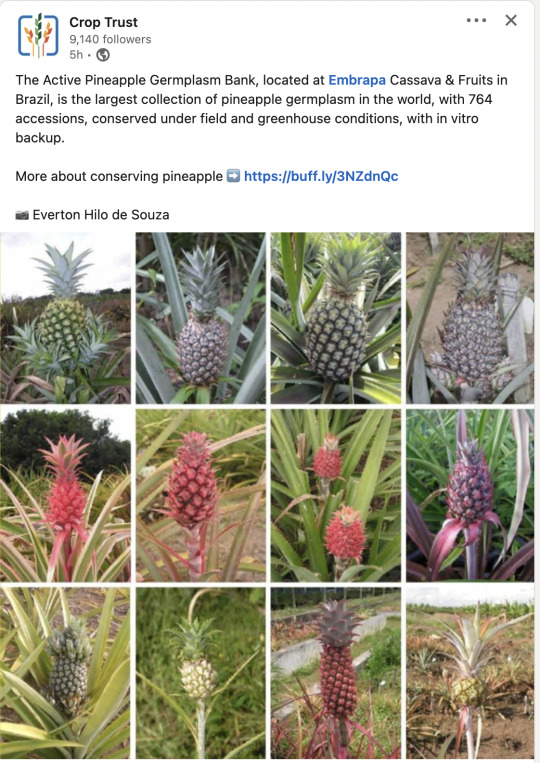
The surprising diversity of Pineapples (Ananas comosus).
The Active Pineapple Germplasm Bank (Pineapple AGB) of Embrapa Cassava & Fruits (Embrapa/ CNPMF) has more than 700 accessions under field conditions. As backups, there are copies kept in a greenhouse, with one or two plants per accession, cultivated in plastic pots with commercial substrate. An in vitro gene bank was established in 2003, and during the past few years, several studies have been carried out to improve the in vitro conservation protocol. Currently, about 60% of the AGB’s accessions are preserved by this protocol. Another conservation strategy used is cryopreservation of shoot tips and pollen grains, with well-defined methods. One of the most significant advances in the pineapple germplasm conservation has been the implementation of a quality control system, which enabled to define standard operation procedures (SOP) towards a more efficient and safer germplasm conservation.
Source:
Vidigal Souza, Fernanda & Souza, Everton & Aud, Fabiana & Costa, Eva & Silva, Paulo & Andrade, Eduardo & Rebouças, Danilo & Andrade, Danilo & Sousa, Andressa & Pugas, Carlos & Rebouças, Érica & França, Beatriz & França, Rivã. (2022). Advances in the conservation of pineapple genetic resources at Embrapa Cassava and Fruits. 28. 28-33.
#katia plant scientist#botany#plant biology#plant science#plants#fruit#pineapple#pineapples#biodiversity#agriculture#conservation#genetic diversity#sustainable agriculture#tropical plants#science#biology
328 notes
·
View notes
Text

did i never share these sillies
#why yes i did touch on two random tangle aus i invented ages ago#if you remember that doodlepage ur cool#emotangle gets more purple cause i like how it looks. canon tangle should get more purple#idw LOVES to ignore tangle’s purple :(#the 2 dragons are also sorta sonic doodles- if you count an alt species genetically different from sonics that-#-came from the stars to a planet that could house them comfortably and led to dragon legends around the world#and also compress themselves into a smaller chibi form to conserve energy that resembles. sonic chars#tangle the lemur#sonic fanart#leori art moment
29 notes
·
View notes
Text
Kākāpō are avid walkers, wandering on strong legs for miles at a time and hiking up mountains to find mates. They’re keen climbers too, clambering up New Zealand’s 65-foot-high rimu trees on large claws to forage for red berries on the tips of the conifer’s branches. But there’s one thing that the world’s heaviest parrot species can’t do: fly. With their bulky frames—males weigh up to nine pounds—and waddling gait, they have little chance of outrunning predators like stoats and feral cats. When threatened, the nocturnal parrots freeze, relying on their moss-green feathers to act as camouflage.
Continue Reading.
90 notes
·
View notes
Text
"Similar to the expeditions of a hundred or two hundred years ago, the Tara Pacific expedition lasted over two years. Its goal was to research the conditions for life and survival of corals. The ship crossed the entire Pacific Ocean, assembling the largest genetic inventory conducted in any marine system to date. The team's 70 scientists from eight countries took around 58,000 samples from the hundred coral reefs studied.
The first results of the analysis have now been published in Nature Communications. This largest-ever data set collection on coral reef ecosystems is freely available, and for years to come, will be the basis for elucidating the living conditions for corals and finding a way for them to survive climate change.
Important first results of the expedition show that global microbial biodiversity is much higher than previously thought. The impacts of the environment on evolutionary adaptation are species-specific, and important genes in corals are duplicated.
Global biodiversity ten times higher than assumed
Coral reefs are the most biologically diverse marine ecosystem on Earth. Although they cover only 0.16% of the world's oceans, they are home to about 35% of known marine species. Using a genetic marker-based data set, the researchers found that all of the globally estimated bacterial biodiversity is already contained in the microorganisms of coral reefs.
"We have been completely underestimating the global microbial biodiversity," says Christian Voolstra, professor of genetics of adaptation in aquatic systems at the University of Konstanz and scientific coordinator of the Tara Pacific expedition. He says the current estimate of biodiversity (approximately five million bacteria) is underestimated by about a factor of 10.
Impacts of the environment on evolutionary adaptation are species-specific
The 32 archipelagos studied serve as natural laboratories and provide a wide range of environmental conditions, allowing scientists to disentangle the relationships between environmental and genetic parameters across large spatial scales. This led to another important finding: The effects the environment has on evolutionary adaptation trajectories of corals are species-specific. To determine this, the researchers examined the telomeres, the ends of chromosomes that are the carriers of genetic information, for the first time.
In humans, the length of telomeres decreases during life; that is, with an increasing number of cell divisions, suggesting that biological age is closely linked to the length of telomeres. Researchers on the Tara Pacific expedition have now found that the telomeres in very stress-resistant corals are always the same length. "They apparently have a mechanism to preserve the lengths of their telomeres," Voolstra concludes...
Important genes are duplicated
Research data from the Tara Pacific expedition brought to light that the long life of some coral species may have yet another reason: the duplication of certain genes. Many important genes are present multiple times in the genome. The researchers were able to determine this through sequencing of coral genomes employing a new high-resolution technique.
This technique, called long-read sequencing, makes it possible to not only determine the set of genes present, but also to look at their order in the genome. According to Voolstra, the pervasive presence of gene duplication could be a possible explanation for why corals can live for thousands of years despite being exposed, for instance, to extreme UV radiation in shallow waters.
The entire data collection is freely accessible
All data sets are openly accessible and fully described with accompanying physical and chemical measurements to provide them as a scientific resource to all researchers.
"This is unique," Voolstra says. "It is the largest data set collection on coral reefs ever collected and it is completely open access." The aspiration is that this data collection will serve as a foundation and inventory to guide future study of coral reefs worldwide for many years."
-via Phys.org, June 26, 2023
#coral#coral reef#ocean#ocean conservation#biodiversity#microbiology#genetic diversity#genetic research#conservation#telomeres#genetics#climate change#evolution#ocean life#open access#good news#hope
404 notes
·
View notes
Text
i have to wonder what super hardcore militant vegans think should be done about obligate carnivore animals, because in all my painfully-rapidly-approaching-30-years i've literally never actually seen anyone give a clear consistent much less halfway feasible answer on that
#mostly i've just seen like “how dare you ask questions you just want an excuse to murder you're sealioning ect”#or worse some vague and wildly improbable nonsense about like. fake robot animals covered in beyond meat or something equally convoluted#which is a thing i did see someone suggest as a serious answer#i mean i already know they think i'm a genetically inferior hateful vampire that should starve to death for the greater good#because my exact combination of health conditions make meat basically the only semi-safe way i can get close to enough nutrients#i know this because they have repeatedly told me that i'm either evil or should be sacrificed or both#and yelled at me for asking questions by bringing up the whole disabled thing and then they're like#“a lot of vegans i know are advocates for disability!” as if that ever means jack shit in the society that results from anything#no matter what you do a vast majority of people in any given society will *not* be advocates for the disabled. i'm sorry they just won't.#and what do you think public perception of people who physically can't survive like that is going to skew towards#in a society founded on the belief that non-vegan diets are evil?#at absolute best we're looking at being a heavily marginalized class generally seen as something like vampires and our existences taboo.#(as if these type's own insistence that they should be allowed to harass and shame people doesn't disprove their assertion that we won't be#thinking it could possibly go any better than that is a fucking fairy tale. human nature doesn't work that way.#you simply cannot eliminate the human desire to designate and abuse a class of have-nots. the absolute best you can do is mitigate damage.#take it from someone who's been multiple kinds of disabled and chronically ill all my life. people will not “just”. ever.#i get this even from people who are otherwise very aware of and VERY GOOD at avoiding this sort of thinking#“i'm a disability advocate!” no you are not. you are a poster. my experience has taught me that what people advocate for in their free time#means precisely jack shit for how they will actually act when faced with the situations they make otherwise rational posts about#and the fact of the matter is even if you somehow really are the perfect disability advocate a majority of people WILL NOT BE YOU.#a majority of people in society will be margrat from accounting who clutches her pearls when she sees the gays and thinks autism isnt real#and who has never had a nuanced thought in her life and actively does not want to#a vast majority of people in your Vegan Utopia will not be you and your friends who march with wheelchair users and volunteer at the shelte#a vast majority of people in your Vegan Utopia will be jenny who starved 8 cats to death on broccoli because she can't be bothered#and who thinks that “carnivores” are actual nazis and don't deserve healthcare because she saw someone say that online.#ALWAYS assume your society will be made up mostly of the worst kind of person it can because it WILL ALWAYS BE TRUE and you can't change it#most people seek the low-effort option. and evil is most often banal and low-effort.#i'm just so fucking tired of every single even vaguely lefty-adjacent political movement simultaneously acting like i don't fucking exist#and at the same time that i need to be sacrificed to achieve Utopia. god. at least conservative whackjobs are upfront and honest about#how they think that i'm a burden on society that needs to be Eugenics'd . rather than trying to morally gaslight me about it.
10 notes
·
View notes
Text
Nairobi Observance of the International Day for Biodiversity 2024.
The United Nations has proclaimed May 22 as International Day for Biological Diversity (IDB) to increase understanding and awareness of biodiversity issues. When first created by the Second Committee of the UN General Assembly in late 1993, 29 December (the date of entry into force of the Convention of Biological Diversity), was designated. In December 2000, the UN General Assembly adopted 22 May as IDB, to commemorate the adoption of the text of the Convention on 22 May 1992 by the Nairobi Final Act of the Conference for the Adoption of the Agreed Text of the Convention on Biological Diversity. This was partly done because it was difficult for many countries to plan and carry out suitable celebrations for the date of 29 December, given the number of holidays that coincide around that time of year.
Watch the International Day for Biodiversity Celebrations!

#22 may#biodiversity#biological diversity#international day for biological diversity#convention on biological diversity#united nations biodiversity#united nations in nairobi#genetic resources#be part of the plan#part of the plan#panel discussion#unon#biodiversity crisis#biodiversity conservation#climate crisis#triple planetaey crisis
5 notes
·
View notes
Text
Thing about small italian villages is that the didnt really have roads up until the 70's which of course leads to a massive amount of cousin marriage and inbreeding and while yes my particular own has its issues regarding that (3 major families (one of whom i am part of!!! Yay!!!) that all of the other families are related to, everyone there has bone/joint problems or some sort of schizofrenia) the neighboring one is worse as in they have one major family and the rest of the inhabitants are ppl who immigrated to have a quiet life in the mountain slopes and that by itself could be an extremely interesting study bcs everyone there kinda looks the same-ish and has a frankly insane amount of people with developmental disabilities for a population this small
#ok now that i have typed it out i realized it sounds mean and i want to earnestly say that i am not mocking them i just suck at tone#i do not think its something to be laughed at i just think the whole thing is uh. i wouldnt say tragic but really no one's fault#bcs again. if you live in the mountains where the main city is hard to reach bcs of poor road conditions#which leads to isolation and also extreme stigma against the village folk *of course* the village#will become more secluded and incestuous marriages will happen (aside from the obv economical factor#that a pre industrial reality would entrail)#its just. fascinating on a sociological and genetical level. esp since by when the roads were functional#and the village folk stigma had already gone away the whole 'we stay here we stay together we are better than anyone bcs they are envious#of us and we will continue inbreeding and any kids with severe disabilities born from it are actually Blessed because they are born from us#has already taken so much root it is now unlikely to be eradicated . the nature of italian villages is that every once in a while#someone reinvents blood purity and eugenetics lmao#anyways this whole incest thing is also the reason why i get frustrated about those books that have#the main characters go into small bigoted villages and either finding peace there or be horrified by its conservatives ideas#while never digging on the *why*. like yeah all this 'what happens in the village stays in the village and everyone else is an enemy'#but they never dig into why that mentality was born to begin with and how incest there#actively helps this mentality to continue on like you legit still have grandmas telling you to marry ur cousin#anw. i dont know what i was going for w this rant. it originated from knowing that my aunt turned local saint#was actually schizophrenic and was prone to paranoid attacks and mental breakdowns similar to mine#fun stuff!
3 notes
·
View notes